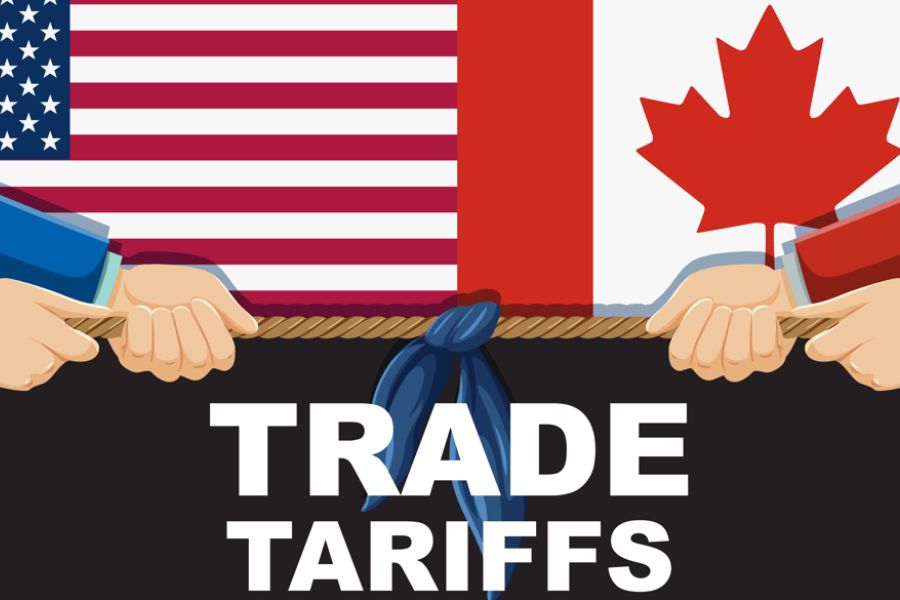The Most Common Trailer Types Used in the Trucking Industry

There are so many different types of trailers out on the road today that it can be difficult to decide which one you should add to your business.
Blue Capital has been in the business for the past 15 years and continues to provide its expert advice on equipment financing options to its buyers in Canada. They are a team of passionate individuals who want to help businesses grow by offering financial services.
In this article, the team has selected the most common types of trailers used in the trucking industry, so that you can get a sense of what’s available in today’s market.
What is a trailer?
A trailer is a vehicle towed by another vehicle that is most commonly used to transport goods and materials. In the trucking and hauling industry. Trailers are crucial for transporting items from one place to the next, and depending on what you are transporting, you will need the right type of trailer.
Standard Flatbed Trailer
The standard flatbed trailer is a very common trailer type because it is versatile and comes in a wide variety of sizes. This kind of trailer is often used in the trucking industry to haul large materials, construction equipment, lumber and other items that can be in the open. Since there are no sides or back to this trailer it makes for easy and quick unloading with either a forklift or crane. This also enables the trailer to carry oversized items.
Refrigerated Trailers
Refrigerated trailers are designed to move commodities that require temperature control. Their insulated walls make the best trailer to haul any perishable goods such as fruit, pharmaceuticals and ice cream.
Step-Deck Trailers
Step-deck trailers also known as drop-deck trailers are commonly used as an alternative to a flatbed trailer. They are used when the height of the load is an issue. Step-deck trailers can haul items up to 10 feet and therefore are more versatile than other trailers.
Double-Drop Trailers
A double-drop trailer is also known as a lowboy trailer, low bed trailer or float trailer. They have close proximity to the ground due to the two drops that occur behind the gooseneck and before the back wheels respectively. As such, double-drop trailers can carry massive pieces of machinery.
Like a step-deck trailer, they also have an advanced height capacity that makes them a great option for hauling large items such as heavy machinery, farm equipment, or industrial materials.
Conestoga Trailers
Conestoga trailers, also called “curtain side” trailers are a specialized trailer type that is designed as an additional option for freight that requires in-transit protection from the weather. They commonly come in these forms: step-deck, double-drop and flatbed.
If you need to protect your cargo from rain, snow, sun, and other elements, then a Conestoga trailer is the trailer you need.
Removable Gooseneck Trailers
Another common class of trailers is the removable gooseneck trailers. These trailers, which come in a variety of sizes, can be used in a lot of the same ways as traditional trailers. In an industry that houses a wide variety of options for shippers to choose from, removable gooseneck trailers are definitely worth considering.
As the name suggests, the gooseneck is used to attach the trailer to the hauling vehicle. The gooseneck can be removed and by doing so, the driver places the front of the trailer on the ground. This creates a ramp for loading and unloading equipment making RGN trailers the perfect tool for hauling large machinery from point A to B.
Dry Van trailer
Dry van trailers are fully enclosed boxes designed to transport a wide range of freight safely and securely. Each trailer can haul up to 45,000 lbs, making dry van the industry standard for moving non-perishable goods on both local and over-the-road (OTR) lanes.
A dry van is a type of semi-trailer that's fully enclosed to protect shipments from outside elements. Designed to carry palletized, boxed or loose freight, dry vans aren't temperature-controlled (unlike refrigerated “reefer” units) and can't carry oversized shipments (unlike flatbed trailers).
Dry van dimensions
Dry vans come in a variety of sizes:
53-foot trailers
The most common types of dry vans on the road, typical dimensions for these trailers are 53’ x 8’ 6” x 8’ 6” (lwh). They can accommodate up 45,000 pounds of freight and up to 26 standard pallet positions across their floor space.
28-foot trailers
“Pup” trailers are commonly used for moving LTL shipments. Measuring 28’ x 8’ x 9’ (lwh), they can accommodate up to 22,500 pounds of freight and 14 standard pallet positions across their floor space.
Which trailer type is the best for your freight?
So you’ve decided on the trailer that you need to add to your fleet for your trucking business, but you’re not sure if your company can afford it. That’s where Blue Capital comes in, as a team of skilled and experienced equipment finance brokers, they can help you get the trailer you need.
Blue Capital Equipment Finance is a nationwide financing company that has decades of experience helping businesses grow with the right equipment financing and apt commercial truck financing. We can help you locate trailers through our established network of truck and trailer dealers.
We offer many financial services and can help you with quick approval with zero down payment options in many cases and competitive interest rates. We have multiple leasing options and can help you find the right financing for your business so that you can utilize a trailer to improve your productivity and hence achieve goals!


